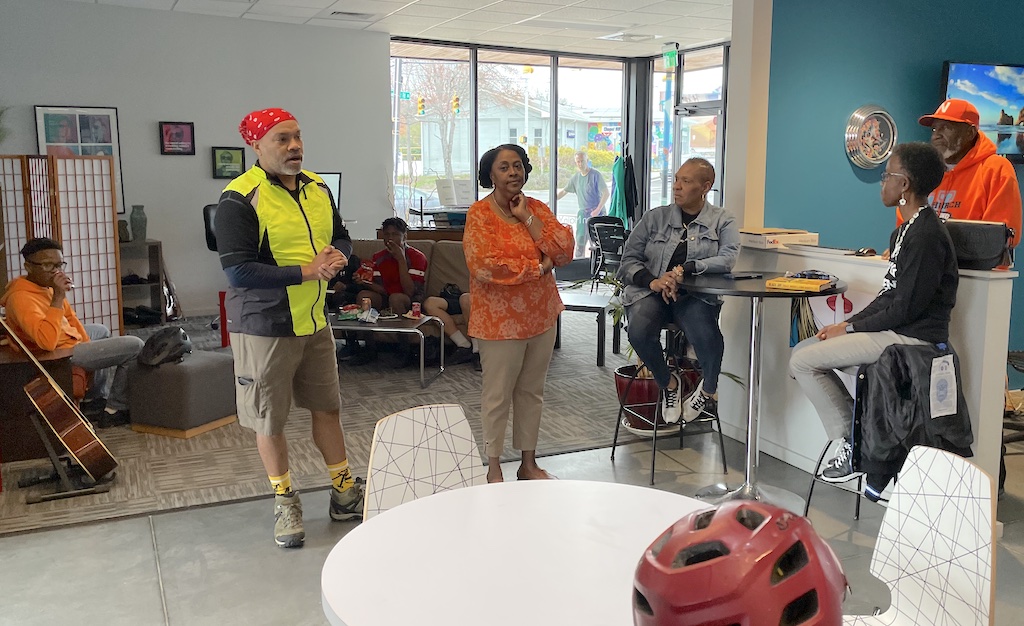Earlier this week, I participated in the inaugural Black History Month Community Bike Ride. Hosted by Triangle Bike Works, the 5-mile ride was led by founder Kevin Hicks and assisted by Next Chapel Hill-Carrboro and local cycling advocacy groups, including RecycleRy, the Carrboro Bicycle Coalition and the Bicycle Alliance of Chapel Hill.
Civil rights historian and educator Danita Mason-Hogans provided historical context for each stop. We were also joined by Carrboro Mayor Damon Seils, a daily bike commuter who acted as a safety marshall for the ride.
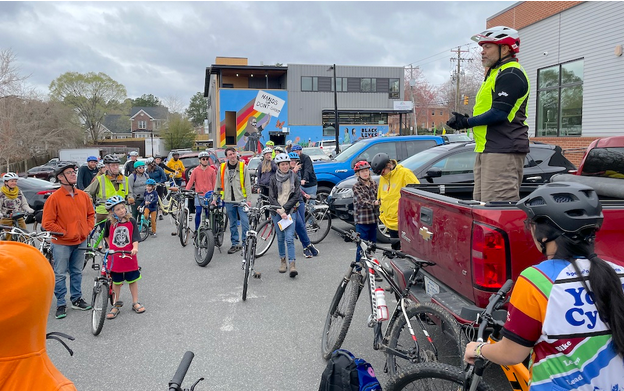
The ride started at the YouthWorx on Main in Carrboro. Riders then made their way to the Libba Cotten Bikeway, which served as the first stop on the journey. The Bikeway is named for the composer of Freight Train who was recently inducted into the Rock & Roll Hall of Fame.
Next up was the Lincoln Center, which currently houses the school district’s administrative buildings. From 1951 until 1966, it was home to Lincoln High School, the segregated high school serving Black students. We recommend listening to the oral histories on the From the Rock Wall website with students who attended Lincoln High School.
We next moved on to the UNC campus where the ride stopped at the James Cates Memorial in The Pit. This is a new memorial that recognizes the murder of James Cates outside the Carolina Student Union and died, despite being only a short distance from the nearby medical center. Journalist Mike Ogle spent years researching Cates’ life and death; here, Ogle discusses his research on a podcast episode from the Chapel Hill Community History podcast.
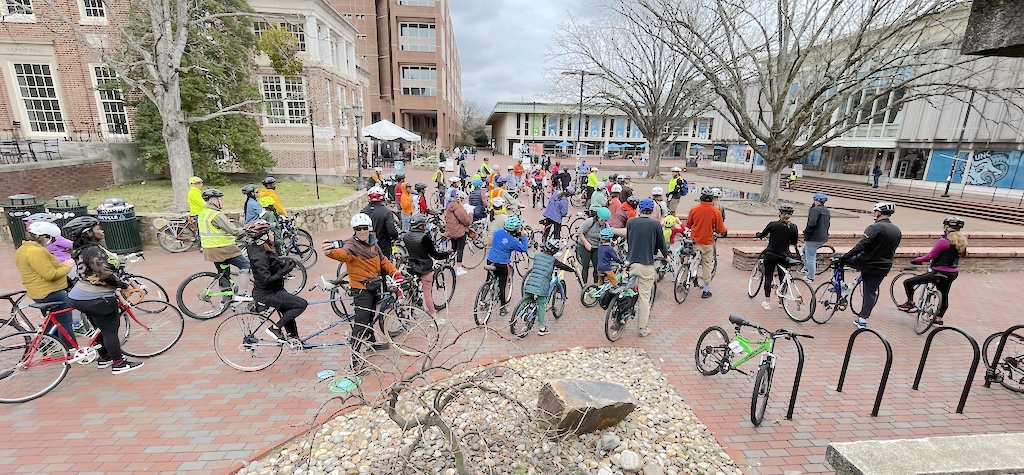
We then rode through the Carolina campus and stopped across from the Peace and Justice Plaza, at 179 E. Franklin Street, where many have exercised their rights to assembly and demonstrate.
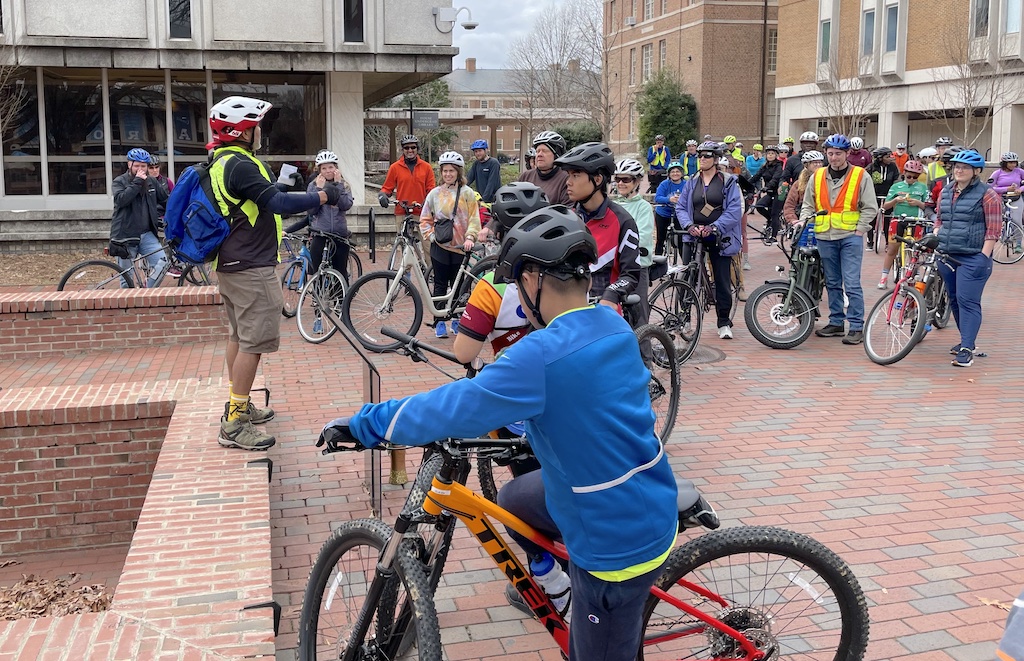
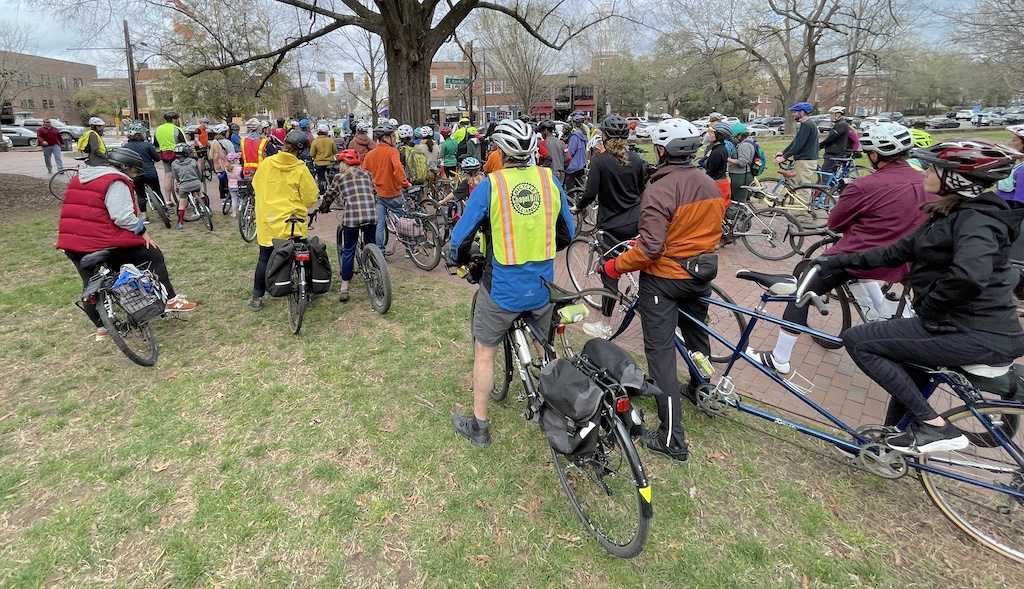
The ride passed the Journey of Reconciliation memorial marker which commentates what was initially called the Journey of Reconciliation, and later known as the First Freedom Ride, where in 1947, the Congress of Racial Equity (CORE) bravely tested, through actions and demonstrations, the 1946 Supreme Court ruling stating that interstate Jim Crow laws on buses and trains were unconstitutional. In Chapel Hill, four of the sixteen riders, including Bayard Rustin, were arrested and angry white men with sticks and rocks followed their car after they were released from jail. The riders’ names were finally cleared in a special ceremony at the Orange County Superior Court in June of 2022. Many primary documents are available to read and listen to on the Carolina Public Humanities 75th anniversary website commemorating the journey.
We continued on to the Chapel Hill Nine marker, which commemorates nine Black teenage students from Lincoln High School, who in 1960 initiated the decade-long direct-action civil rights movement in Chapel Hill by conducting a sit-in at Colonial Drug at 450 West Franklin Street.
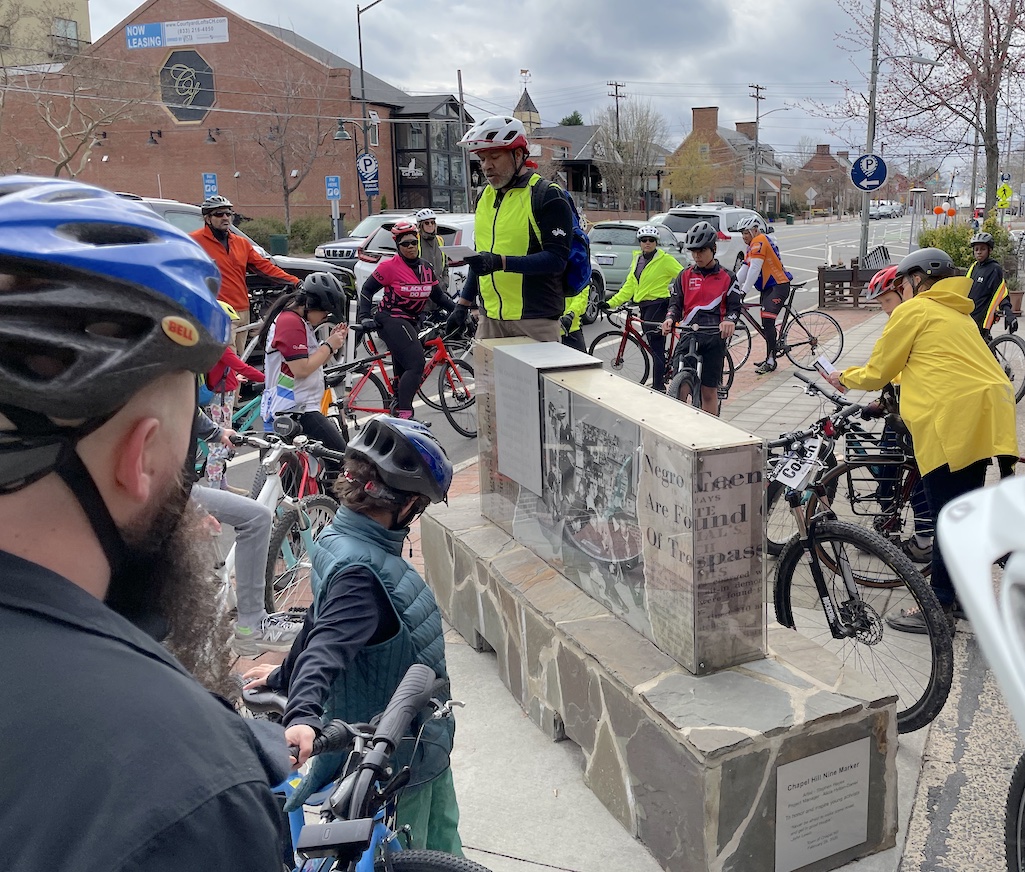
We rode past the edge of the Northside Neighborhood and stopped at the First Baptist Church on N. Robeson Street.
We then rode to the Hargraves Community Center at 216 Roberson Street. Originally known as the Negro Community Center, the building was renamed in 1973 for William M. Hargraves Jr, a former member of the Chapel Hill Parks and Recreation Commission. The first paid director of the center was Lucy Caldwell, who served from 1951 until 1963. She was the first Black professional recreation administrator in the state of North Carolina In May of 1960, Rev. Martin Luther King Jr. gave a talk at Hargraves while visiting Chapel Hill.
Next up, we rode to the newly-painted Elizabeth Cotten mural straddling the border of Chapel Hill and Carrboro.
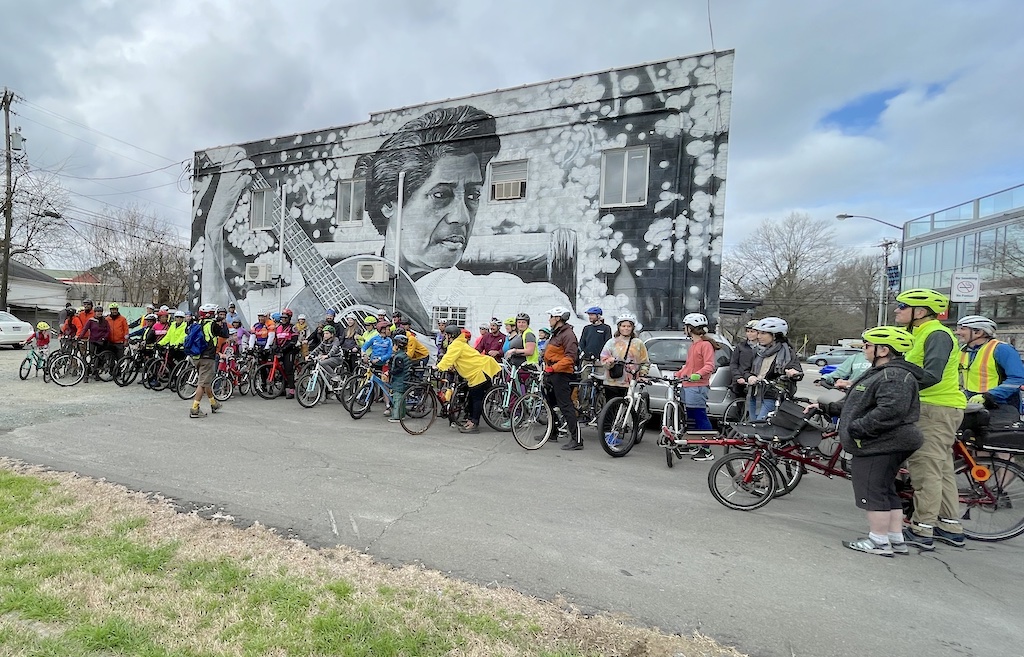
The ride then moved to the Carrboro Black History Mural on Merritt Mill Road. This beautiful mural was completed by artist Kiara Sanders and is called ‘African American Trailblazers’ and is painted on the side of two black owned businesses, Walt’s Grill and Molly’s Gift Shop. The mural includes nurse Adelia Compton, the first Black employee of the town of Chapel Hill (in 1926), William D. “Huck” Peerman, the first Black head football coach of Chapel Hill High School, and Howard Lee, the first and only Black mayor of the Town of Chapel Hill. You can learn about all 12 trailblazers on the Chapel Hill C0mmunity History website.
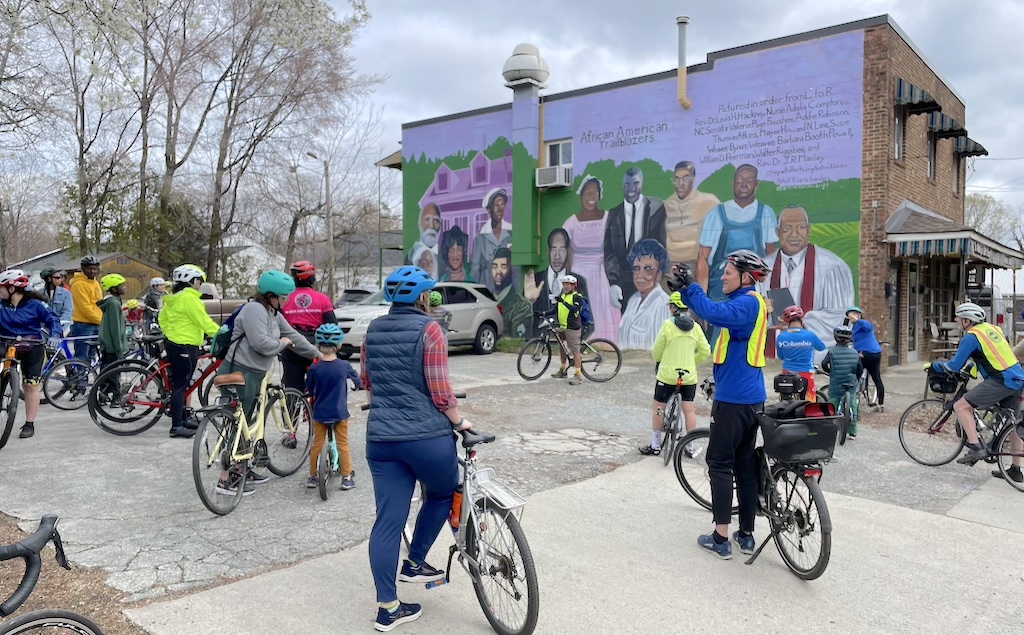
The African American Trailblazers mural celebrates 12 Black trailblazers who helped shape and improve the Chapel Hill and Carrboro community.
The ride finished at the historic Strayhorn Family Home in Carrboro. Toney and Nellie Strayhorn, freed from enslavement, purchased a small lot of land on the outskirts of Chapel Hill and Carrboro. They built a one room cabin in 1879 and eventually expanded it to a two-story home. The family thrived and survived through the turbulent times of the reconstruction and Jim Crow. Descendants continue to live here today.
We finally made it back to YouthWorx where we heard more from Danita Mason-Hogans, a civil rights historian and educator who provided guidance for the stops of the ride. She was joined by Carrboro Town Council member Barbara Foushee, former Hargraves Center Director Nate Davis, and Lorie Clark, the coordinator of student leadership and engagement for the Blue Ribbon Mentor-Advocate program.
It was wonderful to see dozens and dozens of people out 0n bikes learning about our history.
